
San Pedro: The Historic Heart of Santiago de Compostela
Discover San Pedro in Santiago de Compostela: A historic neighbourhood brimming with charm, culture, and culinary delights for an authentic Spanish experience.
Nestled in the enchanting city of Santiago de Compostela, San Pedro is a neighbourhood steeped in history and culture. This area, with its cobblestone streets and centuries-old buildings, offers a glimpse into the past while providing all the conveniences of the modern day. San Pedro is renowned for its picturesque charm and its vibrant atmosphere, making it an ideal destination for tourists seeking an authentic Spanish experience. San Pedro is home to numerous historical landmarks that are a must-visit for any history enthusiast. The majestic Monastery of San Pedro de Mezonzo stands as a testament to the neighbourhood's rich monastic past. Visitors can explore the serene cloisters and marvel at the stunning architecture that has been preserved through the ages. The neighbourhood also features quaint squares and ancient churches, each with their own unique stories and architectural styles. For those who enjoy a culinary adventure, San Pedro does not disappoint. The local markets and eateries offer a taste of traditional Galician cuisine, from fresh seafood to delicious empanadas. Wander through the narrow streets and discover hidden gems where locals gather to enjoy tapas and wine. The neighbourhood's vibrant markets are perfect for picking up authentic souvenirs and local delicacies to take home. San Pedro is also a hub of cultural activities and festivals. Throughout the year, the neighbourhood hosts various events that celebrate its heritage, including traditional music and dance performances. These festivities are a wonderful opportunity to immerse yourself in the local culture and enjoy the warm hospitality of the residents. Whether you are exploring the historic sites, indulging in local cuisine, or participating in festive celebrations, San Pedro offers a truly unforgettable experience.
Local tips in San Pedro
- Visit the Monastery of San Pedro de Mezonzo early in the morning to avoid crowds and enjoy a peaceful experience.
- Wear comfortable walking shoes as the neighbourhood's cobblestone streets can be uneven and challenging.
- Try the local seafood dishes at the neighbourhood's family-owned restaurants for an authentic taste of Galician cuisine.
- Check the local event calendar for traditional music and dance performances during your visit.
- Take time to wander through the local markets for unique souvenirs and fresh local produce.
San Pedro: The Historic Heart of Santiago de Compostela
Nestled in the enchanting city of Santiago de Compostela, San Pedro is a neighbourhood steeped in history and culture. This area, with its cobblestone streets and centuries-old buildings, offers a glimpse into the past while providing all the conveniences of the modern day. San Pedro is renowned for its picturesque charm and its vibrant atmosphere, making it an ideal destination for tourists seeking an authentic Spanish experience. San Pedro is home to numerous historical landmarks that are a must-visit for any history enthusiast. The majestic Monastery of San Pedro de Mezonzo stands as a testament to the neighbourhood's rich monastic past. Visitors can explore the serene cloisters and marvel at the stunning architecture that has been preserved through the ages. The neighbourhood also features quaint squares and ancient churches, each with their own unique stories and architectural styles. For those who enjoy a culinary adventure, San Pedro does not disappoint. The local markets and eateries offer a taste of traditional Galician cuisine, from fresh seafood to delicious empanadas. Wander through the narrow streets and discover hidden gems where locals gather to enjoy tapas and wine. The neighbourhood's vibrant markets are perfect for picking up authentic souvenirs and local delicacies to take home. San Pedro is also a hub of cultural activities and festivals. Throughout the year, the neighbourhood hosts various events that celebrate its heritage, including traditional music and dance performances. These festivities are a wonderful opportunity to immerse yourself in the local culture and enjoy the warm hospitality of the residents. Whether you are exploring the historic sites, indulging in local cuisine, or participating in festive celebrations, San Pedro offers a truly unforgettable experience.
Iconic landmarks you can’t miss
Cathedral of Santiago de Compostela
Explore the stunning Cathedral of Santiago de Compostela, a UNESCO World Heritage site and a masterpiece of Romanesque architecture in the heart of Spain.

Parque da Alameda (Santiago de Compostela)
Explore the serene beauty of Parque da Alameda, a picturesque park in Santiago de Compostela, perfect for relaxation and panoramic views.
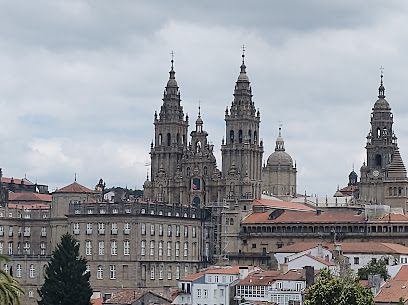
Monte de San Pedro
Discover the tranquil beauty of Monte de San Pedro, a serene city park in A Coruña offering breathtaking ocean views and rich historical charm.

Cidade da Cultura de Galicia
Discover the stunning Cidade da Cultura de Galicia, a modern architectural wonder in Santiago de Compostela, showcasing rich Galician culture and heritage.
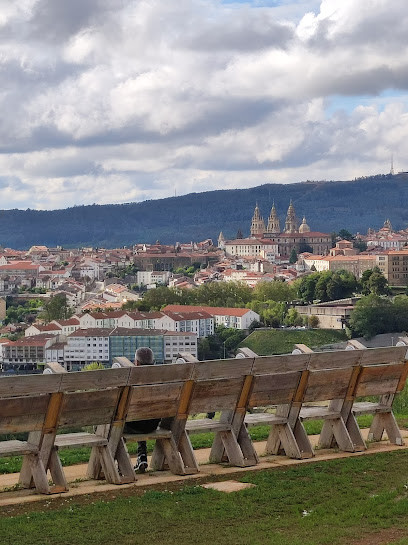
Parque de San Domingos de Bonaval
Experience the serene beauty and historical charm of Parque de San Domingos de Bonaval in Santiago de Compostela, a perfect escape for nature lovers.
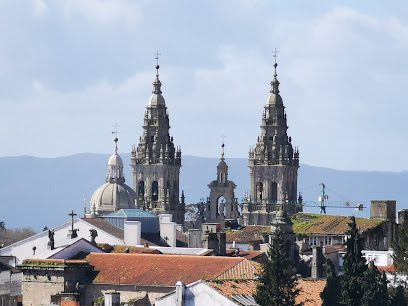
As Duas Marias
Discover the enchanting As Duas Marias sculpture in Santiago de Compostela's lush Parque de la Alameda, a must-see for art and history enthusiasts.
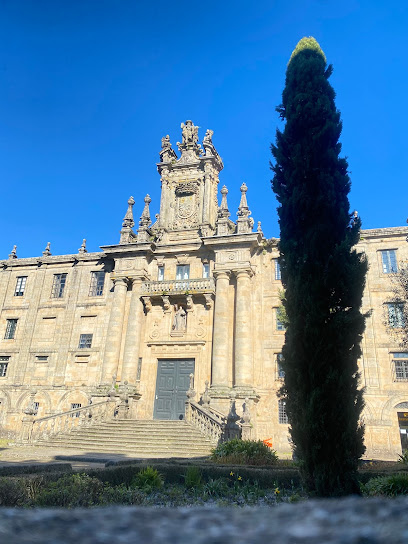
Porch of the Glory
Explore the breathtaking Porch of the Glory at Santiago de Compostela Cathedral, a masterpiece of Romanesque architecture and a symbol of spiritual pilgrimage.
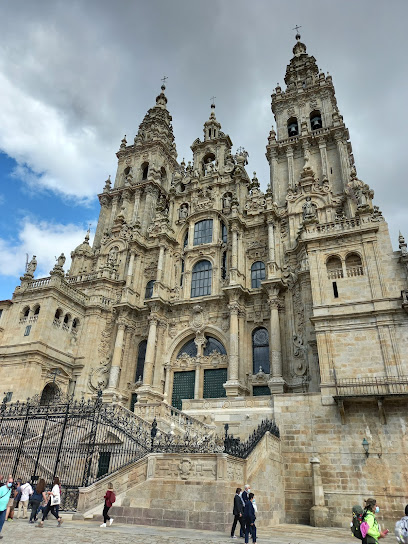
Miradoiro da Catedral
Explore the scenic beauty and rich history at Miradoiro da Catedral, a must-visit viewpoint in Santiago de Compostela offering breathtaking vistas.
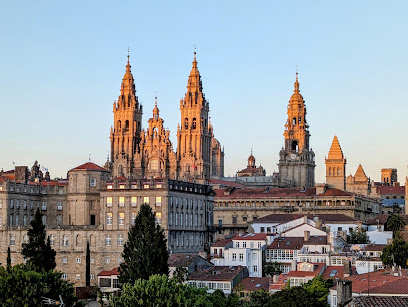
Fountain of Horses
Discover the breathtaking beauty of the Fountain of Horses in Santiago de Compostela, a historical landmark that embodies the city's rich culture and artistry.
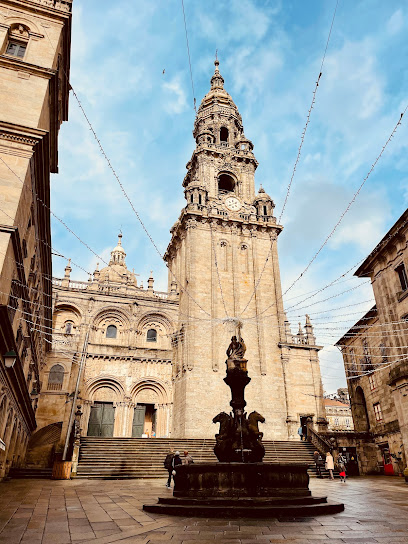
Capela de San Pedro Apóstol
Discover the tranquil charm of Capela de San Pedro Apóstol, a historic chapel in Santiago de Compostela, perfect for reflection and exploration.
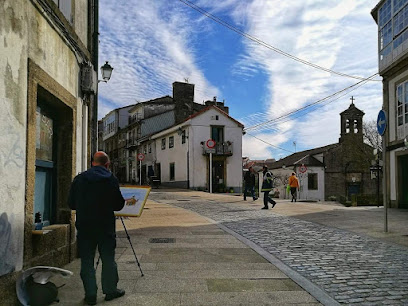
Unmissable attractions to see
Cathedral of Santiago de Compostela
Explore the rich history and architectural beauty of Santiago de Compostela's Cathedral, a UNESCO World Heritage site and spiritual landmark.
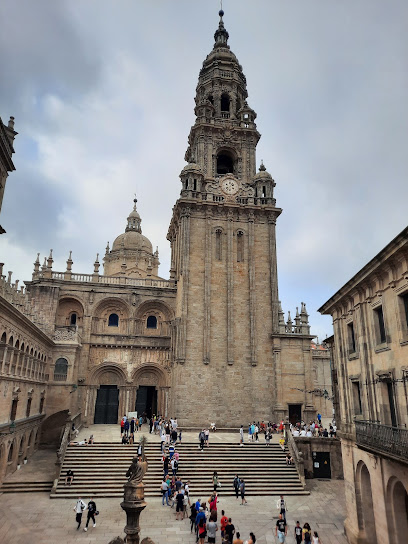
Parque da Alameda (Santiago de Compostela)
Explore the natural beauty and stunning views of Parque da Alameda in Santiago de Compostela, a serene park perfect for relaxation and cultural events.
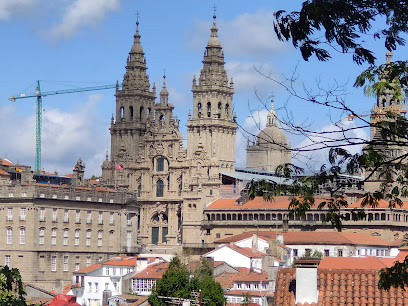
Praza de Galicia
Explore the lush greenery and historical charm of Praza de Galicia, a vibrant park in the heart of Santiago de Compostela, ideal for relaxation and cultural immersion.
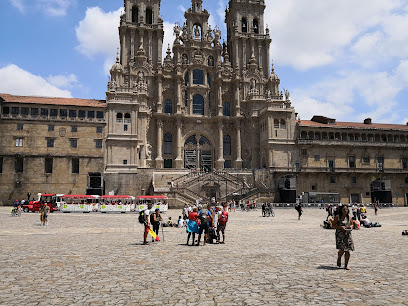
Cidade da Cultura de Galicia
Visit the Cidade da Cultura de Galicia in Santiago de Compostela for an inspiring journey through art, history, and breathtaking architecture.
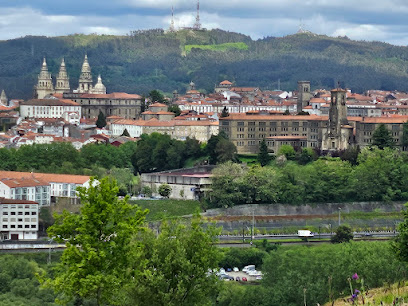
Praza da Quintana de Vivos
Experience the historic charm and cultural vibrancy of Praza da Quintana de Vivos in Santiago de Compostela, a must-visit landmark for all travelers.
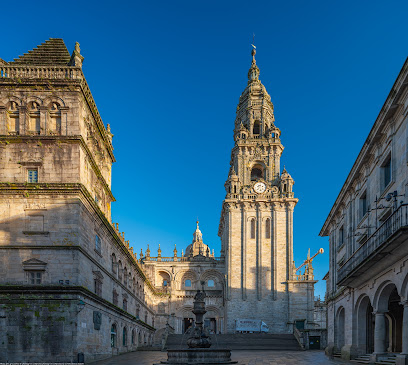
Parque de San Domingos de Bonaval
Discover the tranquil beauty of Parque de San Domingos de Bonaval, a historic park in Santiago de Compostela, blending nature and architecture.
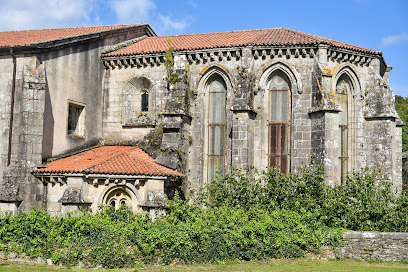
Museo del Pueblo Gallego
Explore the rich tapestry of Galician heritage at Museo del Pueblo Gallego in Santiago de Compostela, where culture, history, and art converge.
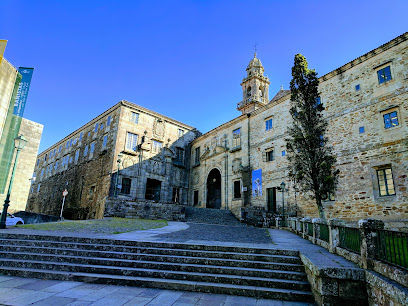
Museum of Pilgrimage
Explore the rich history of pilgrimage at the Museum of Pilgrimage in Santiago de Compostela, where spirituality meets cultural heritage.
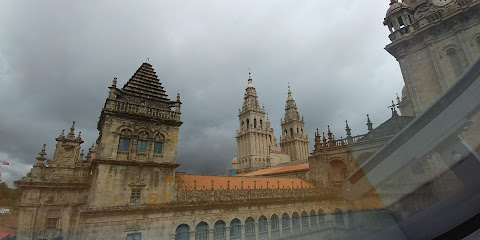
Fountain of Horses
Explore the enchanting Fountain of Horses in Santiago de Compostela, a stunning historical landmark and a must-visit tourist attraction.
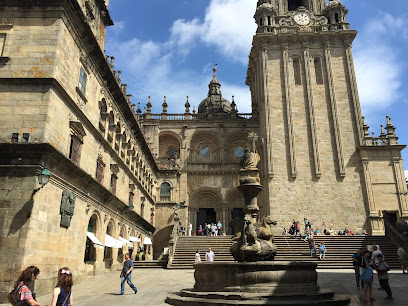
Essential places to dine
Casa de Xantar O Dezaseis (Santiago de Compostela)
Experience authentic Galician flavors at Casa de Xantar O Dezaseis in Santiago de Compostela - where tradition meets modern dining.
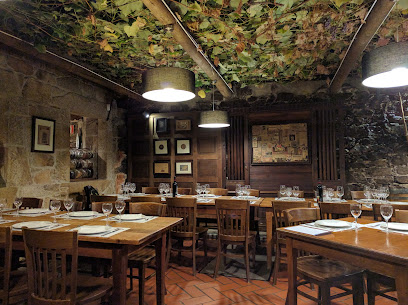
Restaurante A Moa
Experience authentic Galician cuisine at Restaurante A Moa in Santiago de Compostela – where tradition meets modern dining.
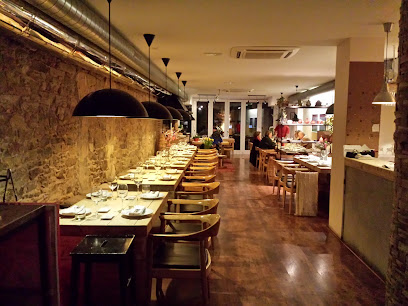
Restaurante A Maceta
Experience authentic Mediterranean cuisine at Restaurante A Maceta in Santiago de Compostela—where local flavors meet culinary artistry.
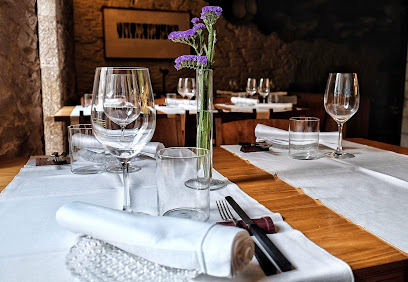
TS - A Casa
Discover the vibrant flavors at A Casa in Santiago de Compostela, where traditional tapas meet innovative vegan cuisine in a warm setting.

O Cabildo (Santiago de Compostela)
Discover authentic Mediterranean cuisine at O Cabildo in Santiago de Compostela - where every meal tells a story.

Churraría San Pedro
Discover the sweet delight of churros at Churraría San Pedro in Santiago de Compostela – where tradition meets taste!
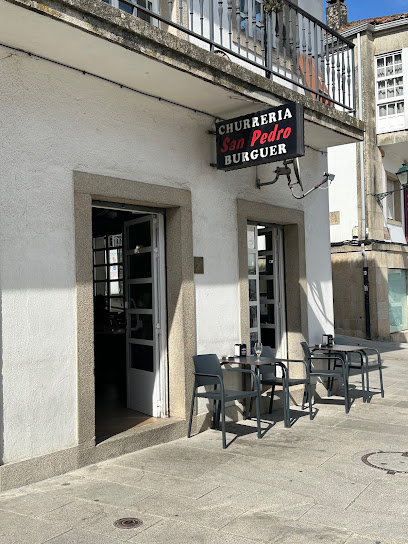
Bar Pampín
Experience authentic Galician cuisine at Bar Pampín, where every dish tells a story through flavors and tradition.

Restaurante O Catro, en Santiago
Experience authentic Galician cuisine at Restaurante O Catro in Santiago de Compostela - where tradition meets modern flavor.
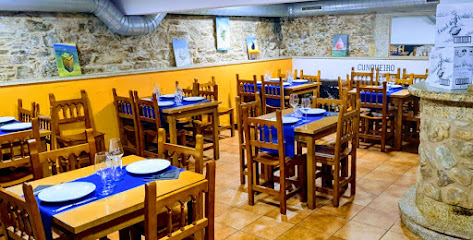
A Tasquiña de San Pedro
Discover the essence of Galician cuisine at A Tasquiña de San Pedro – a must-visit restaurant in Santiago de Compostela.
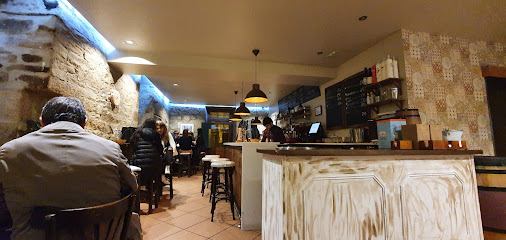
Pulpería O Bochinche
Experience authentic Galician cuisine at Pulpería O Bochinche in Santiago de Compostela – where fresh seafood meets vibrant local culture.
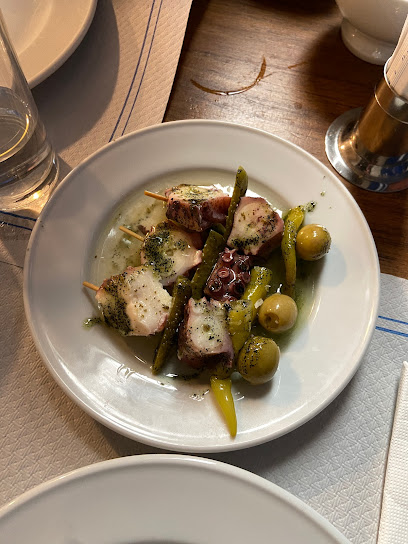
Markets, malls and hidden boutiques
Área Central Shopping mall
Experience shopping and dining at the Área Central Shopping Mall in Santiago de Compostela, where modern retail meets local culture.
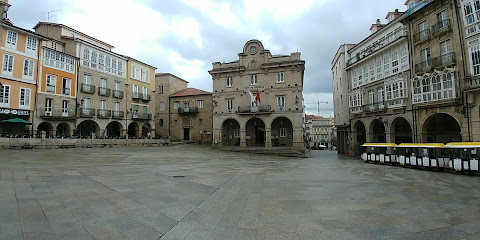
Sargadelos Galería Santiago
Explore the exquisite craftsmanship of Sargadelos Galería Santiago, a unique chinaware store and art gallery in the heart of Santiago de Compostela.
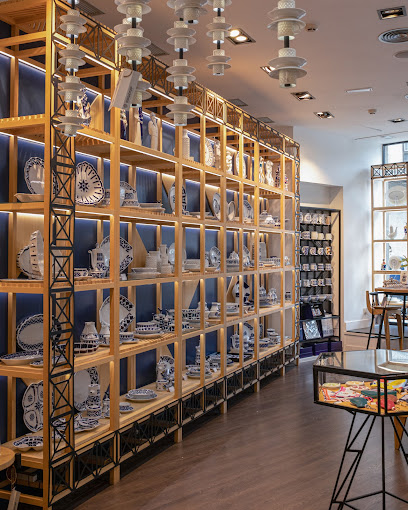
La Tienda de Julia - Santiago
Explore La Tienda de Julia in Santiago, a hidden gem offering unique clothing and accessories that embody the spirit of Galicia.
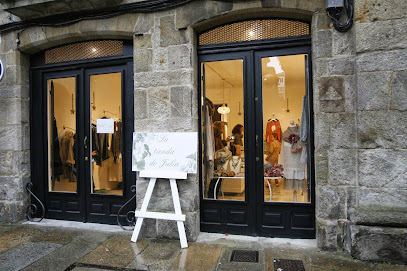
O Pan De Leis - San Pedro
Discover the authentic taste of Santiago's renowned bakery, O Pan De Leis, offering artisanal breads and delightful pastries in a cozy setting.

Pilgrim Bag
Explore the artistry of unique handbags at Pilgrim Bag in Santiago de Compostela, where style meets craftsmanship in the heart of Spain.

FainoTí
Explore FainoTí in Santiago de Compostela, your go-to destination for exquisite wool products and local craftsmanship.

Ratiños Coffee Shop
Discover Ratiños Coffee Shop, a perfect blend of cozy ambiance and delicious coffee in the heart of Santiago de Compostela – an essential stop for every traveler.
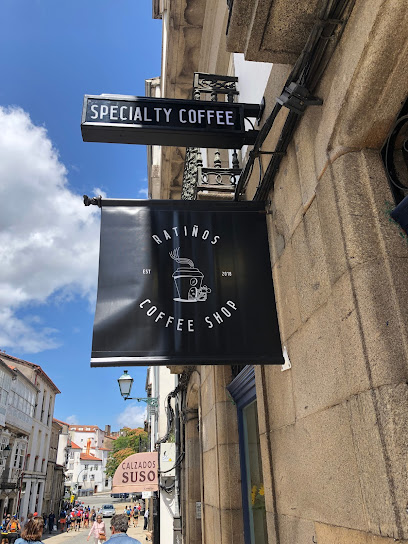
Atmosfera Sport SANTIAGO DE COMPOSTELA
Explore Santiago de Compostela with premium sporting goods from Atmosfera Sport, your go-to destination for athletic gear and equipment.
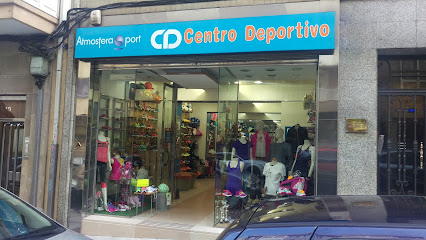
La Chumbera Compostela
Explore unique fashion at La Chumbera Compostela, where stylish clothing meets the vibrant culture of Santiago de Compostela.
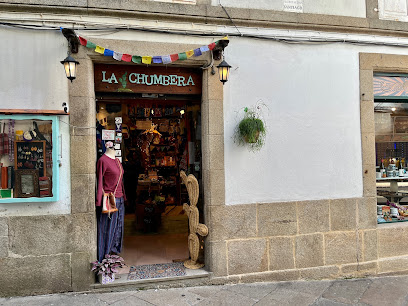
Octopus - Pulpo, Galicia. Tienda de artesanías, souvenirs y regalos
Explore Octopus in Santiago de Compostela for unique Galician crafts and souvenirs that capture the spirit of this enchanting region.
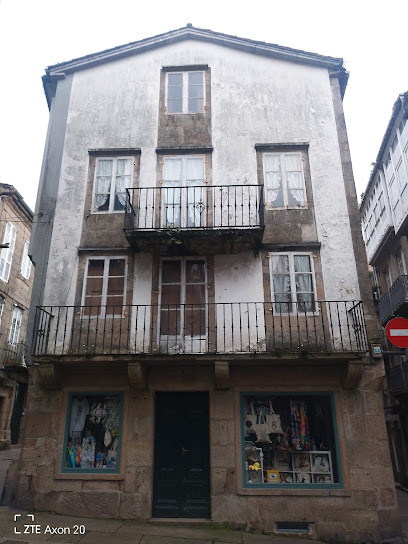
Essential bars & hidden hideouts
Pub Momo
Discover the lively spirit of Santiago de Compostela at Pub Momo, where great drinks and vibrant atmosphere await in this beloved local pub.
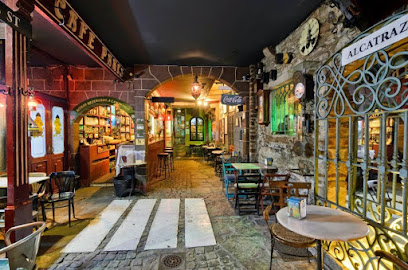
Casa de Xantar O Dezaseis (Santiago de Compostela)
Discover the authentic taste of Galicia at Casa de Xantar O Dezaseis, where fresh ingredients meet traditional recipes in a delightful dining experience.
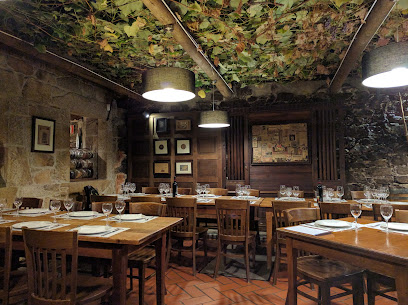
Pub Garoa
Discover the lively spirit of Santiago de Compostela at Pub Garoa, where expertly crafted cocktails and vibrant nightlife await.
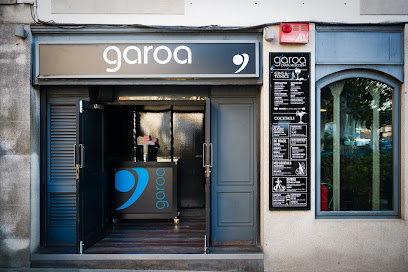
Pub Atlántico (Santiago de Compostela)
Discover the lively atmosphere of Pub Atlántico, where cocktail creativity meets the best rock music in Santiago de Compostela.
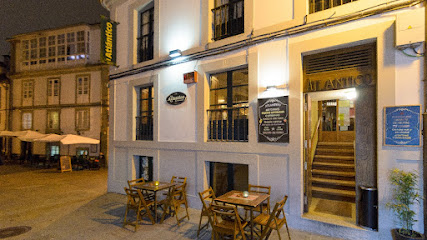
TS - A Casa
Experience the vibrant culinary scene of Santiago de Compostela at A Casa, a tapas bar offering delicious vegan and vegetarian options.
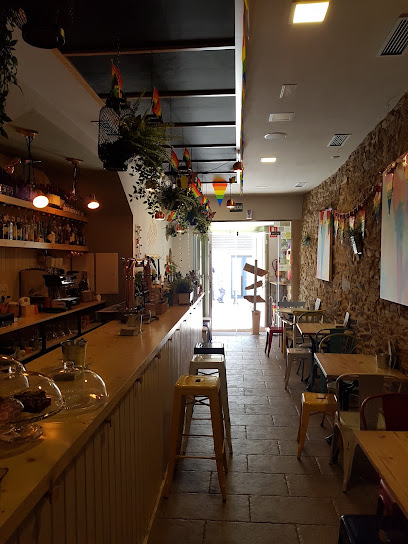
Churraría San Pedro
Experience the authentic flavors of Santiago de Compostela at Churraría San Pedro, where traditional churros delight every palate.
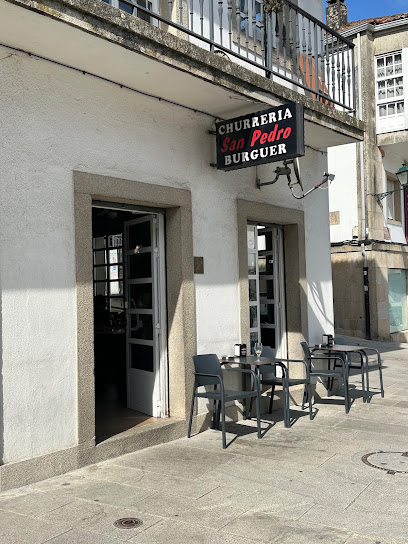
Bar Pampín
Explore the vibrant flavors of Galicia at Bar Pampín, a top tapas bar in Santiago de Compostela offering exquisite dishes and a lively atmosphere.
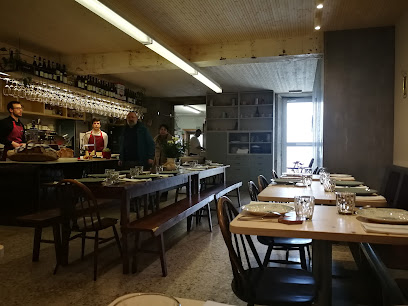
A Reixa Bar (Santiago de Compostela)
Experience the vibrant nightlife of Santiago de Compostela at A Reixa Bar, where friendly faces and lively music await.
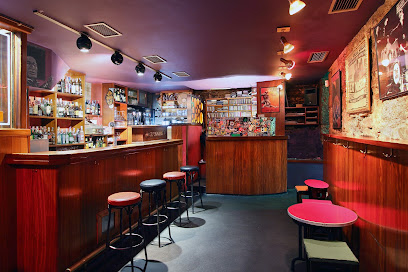
Bar Forest
Discover the charm of Bar Forest in Santiago de Compostela, where local drinks and tapas meet a cozy atmosphere for an unforgettable experience.
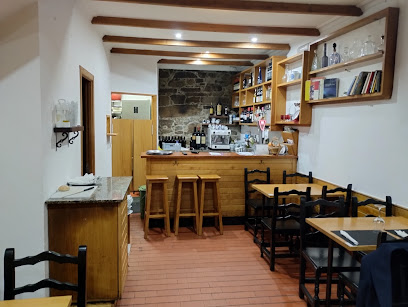
Carballal
Discover Carballal, a charming bar and café in Santiago de Compostela, perfect for coffee lovers and those seeking a cozy retreat.
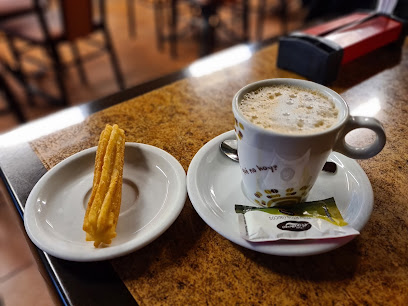
Local Phrases
-
- HelloHola
[oh-lah] - GoodbyeAdiós
[ah-dee-ohs] - YesSí
[see] - NoNo
[noh] - Please/You're welcomePor favor/De nada
[por fah-vor/deh nah-dah] - Thank youGracias
[grah-see-ahs] - Excuse me/SorryPerdón/Lo siento
[pair-dohn/loh see-en-toh] - How are you?¿Cómo estás?
[koh-moh ehs-tahs] - Fine. And you?Bien. ¿Y tú?
[bee-ehn. ee too] - Do you speak English?¿Hablas inglés?
[ah-blahs een-glays] - I don't understandNo entiendo
[noh ehn-tee-ehn-doh]
- HelloHola
-
- I'd like to see the menu, pleaseMe gustaría ver la carta, por favor
[meh goo-stah-ree-ah vehr lah kahr-tah, por fah-vor] - I don't eat meatNo como carne
[noh koh-moh kahr-neh] - Cheers!¡Salud!
[sah-lood] - I would like to pay, pleaseMe gustaría pagar, por favor
[meh goo-stah-ree-ah pah-gahr, por fah-vor]
- I'd like to see the menu, pleaseMe gustaría ver la carta, por favor
-
- Help!¡Ayuda!
[ah-yoo-dah] - Go away!¡Vete!
[veh-teh] - Call the Police!¡Llama a la policía!
[yah-mah ah lah poh-lee-see-ah] - Call a doctor!¡Llama a un médico!
[yah-mah ah oon meh-dee-koh] - I'm lostEstoy perdido/a
[ehs-toy pair-dee-doh/ah] - I'm illEstoy enfermo/a
[ehs-toy ehn-fehr-moh/ah]
- Help!¡Ayuda!
-
- I'd like to buy...Me gustaría comprar...
[meh goo-stah-ree-ah kohm-prahr] - I'm just lookingSolo estoy mirando
[soh-loh ehs-toy mee-rahn-doh] - How much is it?¿Cuánto cuesta?
[kwan-toh kwehs-tah] - That's too expensiveEs demasiado caro
[ehs deh-mah-see-ah-doh kah-roh] - Can you lower the price?¿Puedes bajar el precio?
[pweh-dehs bah-har ehl pree-syoh]
- I'd like to buy...Me gustaría comprar...
-
- What time is it?¿Qué hora es?
[keh oh-rah ehs] - It's one o'clockEs la una
[ehs lah oo-nah] - Half past (10)Y media (a las diez)
[ee meh-dee-ah (ah lahs dyehs)] - MorningMañana
[mah-nyah-nah] - AfternoonTarde
[tahr-deh] - EveningNoche
[noh-cheh] - YesterdayAyer
[ah-yehr] - TodayHoy
[oy] - TomorrowMañana
[mah-nyah-nah] - 1Uno
[oo-noh] - 2Dos
[dohs] - 3Tres
[trehs] - 4Cuatro
[kwah-troh] - 5Cinco
[seen-koh] - 6Seis
[says] - 7Siete
[syeh-teh] - 8Ocho
[oh-choh] - 9Nueve
[nweh-veh] - 10Diez
[dyehs]
- What time is it?¿Qué hora es?
-
- Where's a/the...?¿Dónde está...?
[dohn-deh ehs-tah] - What's the address?¿Cuál es la dirección?
[kwal ehs lah dee-rehk-syohn] - Can you show me (on the map)?¿Puedes mostrarme (en el mapa)?
[pweh-dehs mohs-trar-meh (ehn ehl mah-pah)] - When's the next (bus)?¿Cuándo es el próximo (autobús)?
[kwan-doh ehs ehl proh-ksee-moh (ow-toh-boos)] - A ticket (to ....)Un billete (a ...)
[oon bee-yeh-teh (ah)]
- Where's a/the...?¿Dónde está...?
History of San Pedro
-
San Pedro's history dates back to the early medieval period, closely linked to the development of Santiago de Compostela as a significant pilgrimage site. The neighborhood is named after the Church of San Pedro, which was established in the 10th century, serving both as a parish church and a waypoint for pilgrims journeying to the famous Cathedral of Santiago.
-
During the height of the Camino de Santiago in the Middle Ages, San Pedro became a vibrant community of pilgrims and travelers. The area was dotted with albergues (hostels) and shops catering to the needs of those on pilgrimage. The church itself became a spiritual refuge, where pilgrims would stop to pray and seek blessings before continuing their journey.
-
In the 16th and 17th centuries, San Pedro saw significant architectural developments, particularly with the renovation and expansion of the Church of San Pedro. The church showcases the Mudejar style, characterized by intricate wooden ceilings and detailed altarpieces, reflecting the cultural fusion present in Santiago during that era.
-
Today, San Pedro retains its cultural significance through various local festivals, including the celebration of San Pedro's feast day. The neighborhood embraces its historical roots while fostering a vibrant community life, evident in its markets, artisan shops, and cultural events that attract both locals and visitors.
-
In 1985, the historical significance of San Pedro and its connection to Santiago de Compostela was recognized internationally when the city was declared a UNESCO World Heritage Site. This designation has helped preserve the neighborhood's historical sites and has promoted sustainable tourism, ensuring that San Pedro remains a vital part of the cultural landscape of Santiago.
San Pedro Essentials
-
San Pedro is easily accessible from other neighborhoods in Santiago de Compostela. If you're arriving by train, the Santiago de Compostela train station is located about 2 kilometers from San Pedro. You can take a taxi or use local buses (such as Line 3) to reach the neighborhood. If you're coming from the city center, it's a pleasant 20-minute walk through the historic parts of Santiago. Additionally, the nearest airport is Santiago de Compostela Airport, approximately 11 kilometers away, with regular bus services connecting the airport to the city.
-
San Pedro is a compact neighborhood, making it ideal for exploring on foot. For longer distances, local buses (Line 3 and 6) provide convenient transportation. Biking is also a popular option, with several bike rental services available. If you prefer, taxis are plentiful and can be hailed easily throughout the neighborhood.
-
San Pedro is generally safe for tourists, but it is advisable to take standard precautions. Avoid poorly lit areas at night and be mindful of your belongings in crowded places. Petty theft can occur, especially in tourist-heavy areas, so stay vigilant. There are no specific high-crime areas targeting tourists within San Pedro, but always be cautious in unfamiliar surroundings.
-
In case of an emergency, dial 112 for immediate assistance in Spain. The local police station is nearby, and there are medical facilities available in Santiago. It is advisable to have travel insurance that covers medical emergencies. For minor health issues, local pharmacies can provide over-the-counter medications.
-
Fashion: Do dress modestly, especially when visiting churches or religious sites. Avoid overly casual clothing like beachwear. Religion: Do respect local customs, especially in sacred places; cover your shoulders and knees. Public Transport: Do be polite and offer your seat to elderly passengers. Don’t eat or drink on public transport. Greetings: Do greet locals with a friendly 'Hola' and a smile. Avoid overly familiar gestures unless you know the person well. Eating & Drinking: Do try local Galician dishes and enjoy tapas in local bars. Don’t waste food or refuse hospitality, as it may be considered rude.
-
To experience San Pedro like a local, visit the Mercado de Abastos, a vibrant market where you can find fresh produce and local specialties. Engage with vendors and try some local cheeses and wines. Attend local festivals if your visit coincides with them, as they offer a glimpse into Galician culture. For a unique experience, explore the quiet streets and seek out hidden plazas where you can relax and enjoy the atmosphere away from the busier tourist spots.
Nearby Cities to San Pedro
-
Things To Do in Ponte de Lima
-
Things To Do in Viana do Castelo
-
Things To Do in Braga
-
Things To Do in Chaves
-
Things To Do in Guimarães
-
Things To Do in Vila Real
-
Things To Do in Bragança
-
Things To Do in Porto
-
Things To Do in Lamego
-
Things To Do in Oviedo
-
Things To Do in Aveiro
-
Things To Do in Coimbra
-
Things To Do in Salamanca
-
Things To Do in Valladolid
-
Things To Do in Tomar











